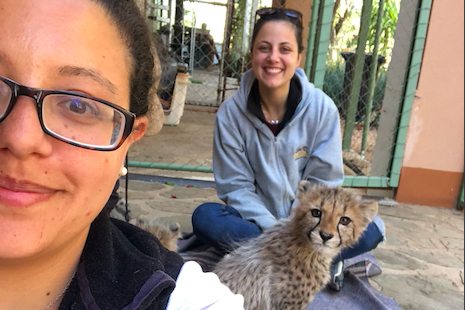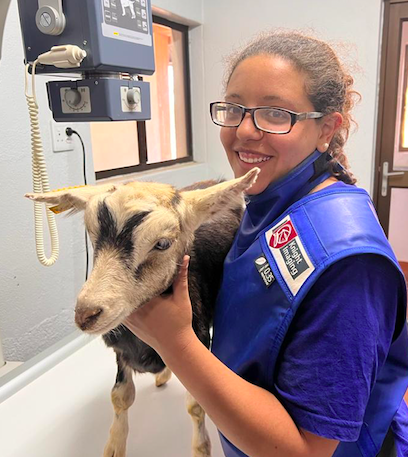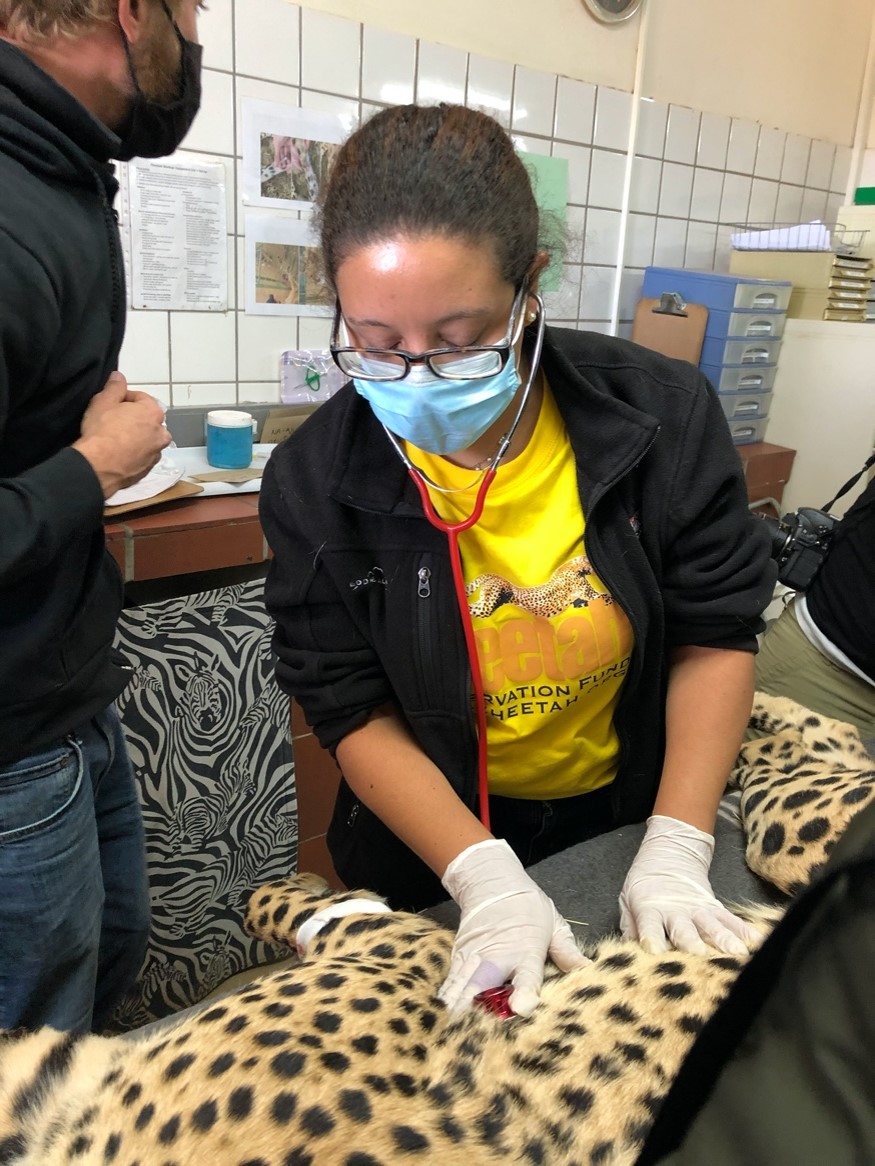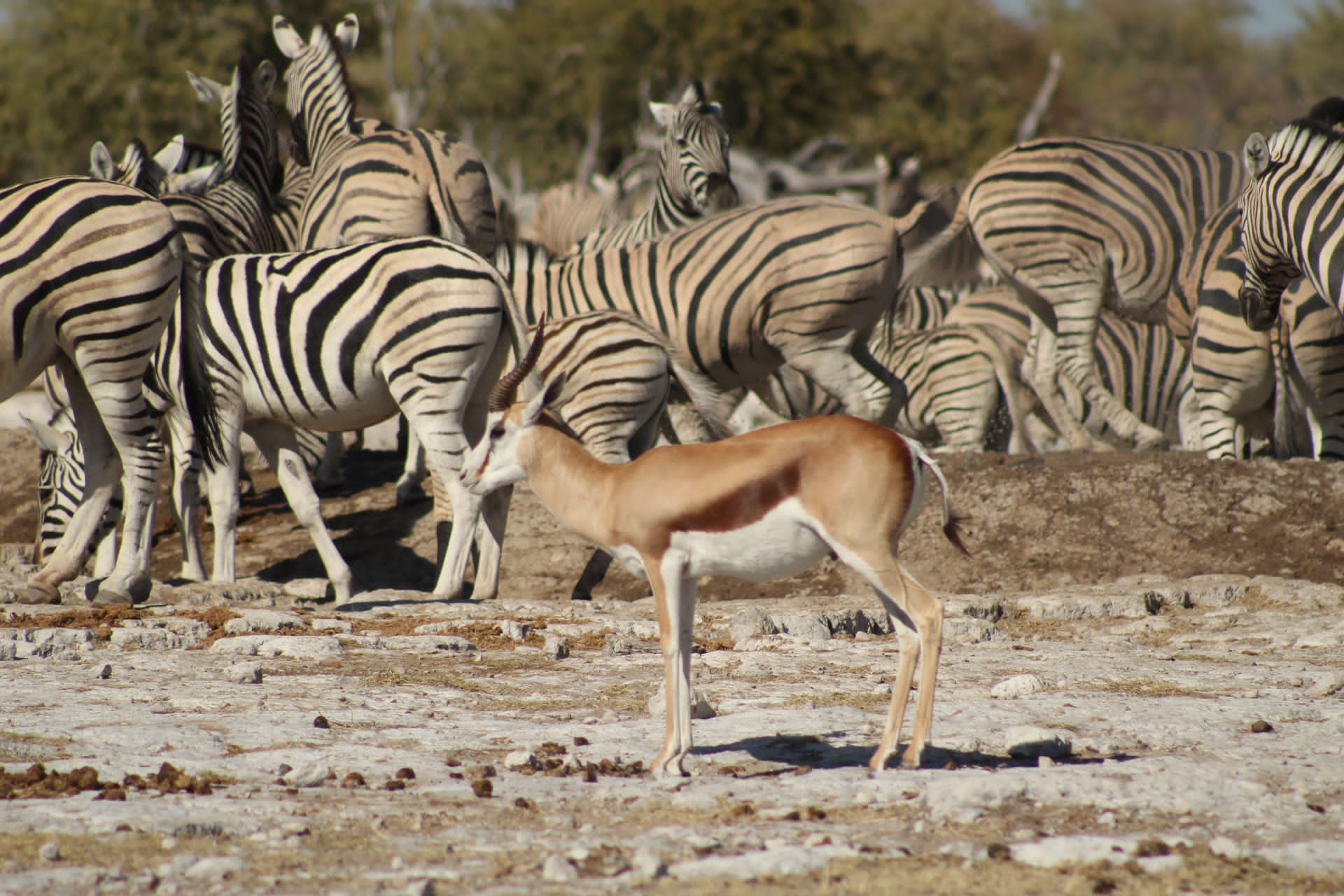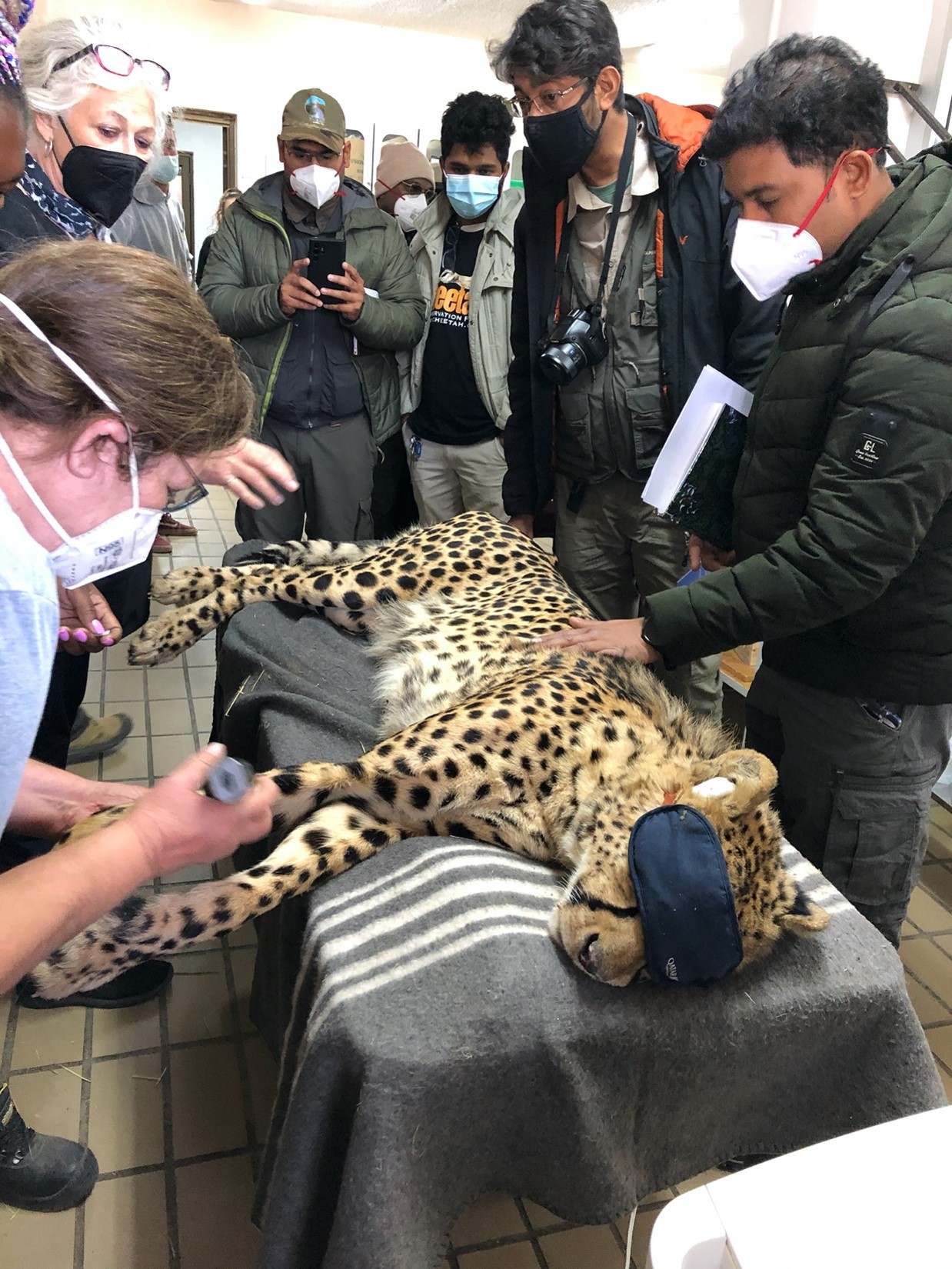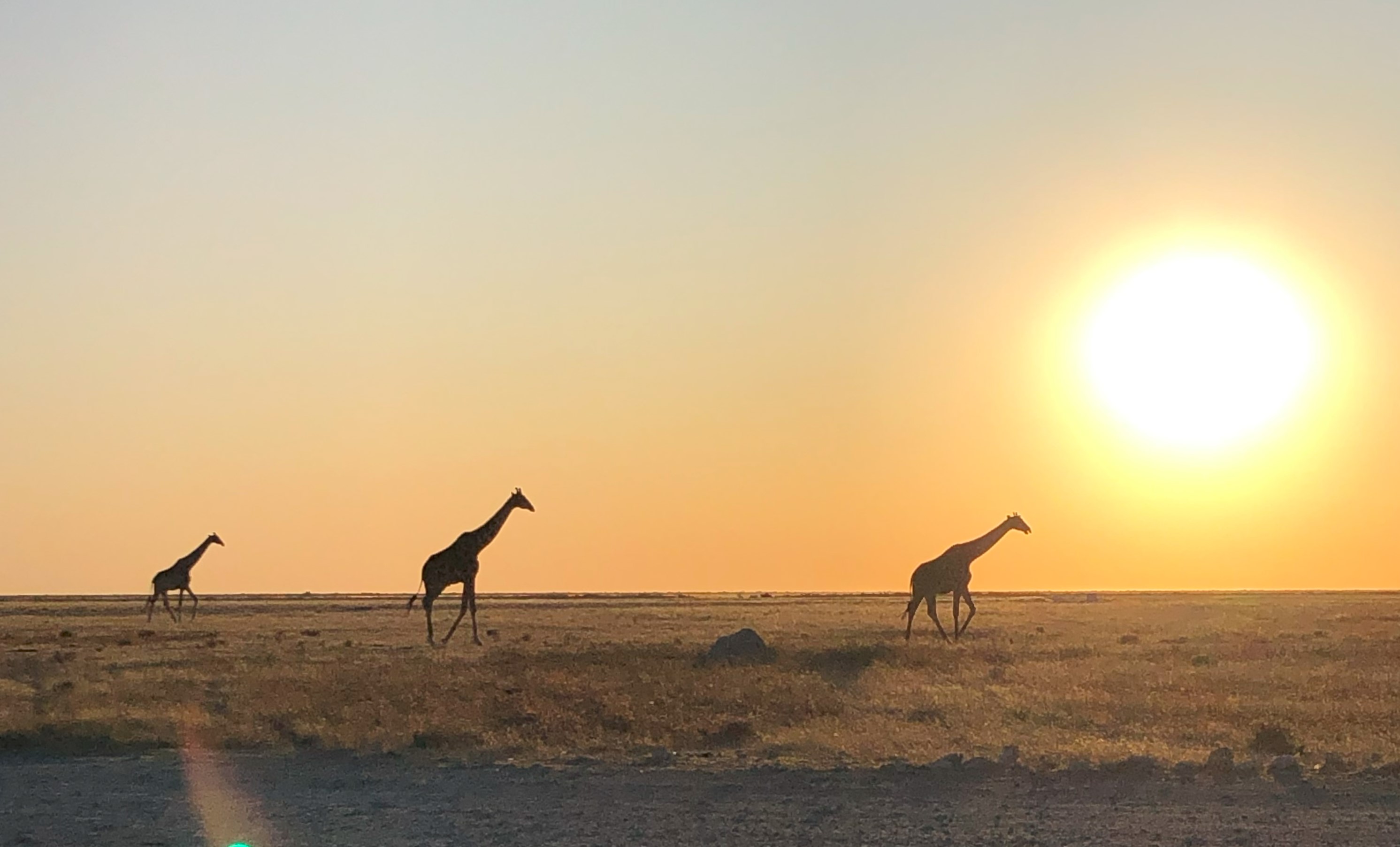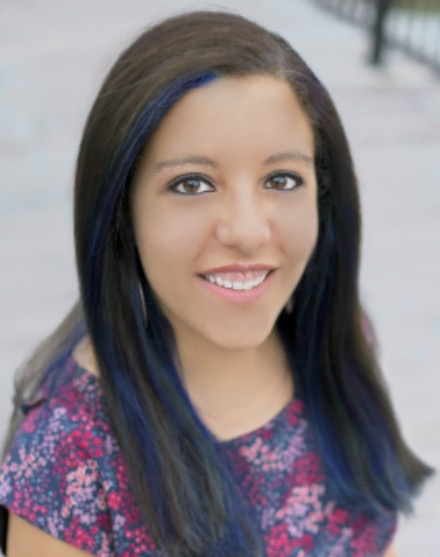A One Health Approach to Cheetah Rehabilitation
By Sarah Abdelmessih, Cornell DVM Class of 2024
This past summer, with support from Cornell’s Expanding Horizons Program, I had the opportunity to work with the Cheetah Conservation Fund in Otjiwarongo, Namibia as a veterinary extern.
Laurie Marker established the Cheetah Conservation Fund (CCF) in 1990 with the primary goal of conserving wild cheetahs worldwide. Through a multifaceted approach focused on genetic research, public education, model farming, and cheetah rehabilitation and release, CCF has become a leading institution for cheetah conservation.
Investigating mastitis
As a veterinary extern, the majority of my time at CCF was focused on gaining hands-on experience within the veterinary clinic. The CCF’s clinic provides medical care not only for cheetahs, but also for livestock including meat goats, dairy goats, and sheep. While caring for these animals, I was able to strengthen my medical and surgical skills managing wounds, caring for hooves, administering vaccinations, and treating eye injuries.
During my time at CCF, mastitis was a common problem seen in the clinic. Mastitis is an inflammation of the mammary gland, usually caused by an infection, that leads to abnormal and decreased milk production. Unfortunately, some of these cases were resistant to antibiotics. During my time at CCF, I was able to delve into this problem further.
My investigation into the mastitis issue began with observing the techniques employed in the milking parlor and studying the nutrition and herd management strategies used in the field. I reviewed the clinic’s medical records to understand diagnostics and treatments used to address mastitis in the past.
Using this information, I developed a protocol to improve both overall husbandry and, more specifically, the treatment of mastitis. An example of one of the changes deployed in the milking parlor was the incorporation of a foot bath for milkers to scrub their boots. I was also able to observe cases where antibiotic resistance was suspected in infected animals. This was a valuable opportunity to not just learn a great deal about mastitis management but also, more broadly, to experience the challenges and complexity of working in public health, particularly in a multicultural setting.
Livestock guarding dog program
I also had the opportunity to assist with the CCF livestock guarding dog program. The program was established more than 20 years ago to help reduce conflict between local farmers and cheetahs. Historically, Namibian farmers have resorted to trapping, poisoning, or shooting cheetahs in order to protect their livestock. CCF uses Anatolian shepherds as guard dogs to protect livestock from cheetahs and other predators, with dog-assisted farms agreeing not to shoot cheetahs.
I assisted with the collection of sperm from the Anatolian shepherds and learned how to prepare and interpret vaginal swabs to determine the stage of estrus in the female dogs. This work will allow CCF researchers to investigate links between genetic markers and behavioral phenotypes in their guard dogs. I also helped with the medical needs of the guard dogs in the veterinary clinic and assisted with a variety of surgeries, including a few fracture repairs.
Working with cheetahs and conducting outreach
While I enjoyed working with livestock and with the guard dogs, the highlight of my time with CCF was helping to care for wild and captive cheetahs and injured wildlife brought to the clinic. When wild cheetahs were brought to the facility, I assisted with anesthesia and medical evaluations. I also helped to treat the captive cheetahs under CCF’s care. This included learning how to draw blood from the lateral tail vein and how to administer medications through a blow dart.
I was trained in wildlife anesthesia techniques and used these skills to monitor animals during their anesthetic procedures. I also administered vaccines, inserted intravenous catheters, and learned how to collect sperm from the cheetahs and determine morphometric measurements.
Although my primary role at CCF focused on maintaining the health of cheetahs and enhancing protocols, I had the opportunity to work within all of CCF’s focal areas. The CCF education team has developed a variety of outreach programs, including a school curriculum.
Utilizing this curriculum, I traveled with the education team to lead a program for about 200 children, ranging from 6-12 years old. We discussed the conflict between predators and livestock, and the importance of conservation. Using “games,” we taught children how to better identify which predators were involved in attacks by recognizing various footprints, stool samples, and even attack patterns. Students were enthusiastic in all aspects of the program, and I was able to see first-hand how integral education can be in shifting perspectives about wildlife.
Wildlife research
I also helped with research focused on monitoring and identifying key components of local ecosystems on the protected land within the area’s reservoir. I set up cameras at various watering holes and retrieved them to aid the ecologists who monitor migration patterns of various wildlife in the reservoir, with a particular emphasis on rhinos, cheetahs, and African wild dogs. I also helped to collect census data by driving into the reservoir area and recording the number, sex, and distance from the road of any major wildlife species observed. These included ostriches, giraffes, oryxes, springboks, and steenboks.
Making connections and looking forward
I am incredibly grateful to have had this Expanding Horizons opportunity at the Cheetah Conservation Fund. I gained so much both personally and professionally that will undoubtedly stay with me throughout my veterinary career. I was able to form personal connections with people that have ambitions similar to my own, and had the opportunity to meet people leading the way in unique conservation efforts.
Another highlight of this experience was the opportunity to live with and work alongside such a diverse community. Having lived in India and backpacked through Southeast Asia, I am not new to travel and new cultures in general. However, I loved having further opportunities to grow and soak in new perspectives and cultures. I learned phrases in many languages, and observed lifestyles and approaches to family life in Namibia that are vastly different from my own here in the U.S. And of course, I tried new foods.
I felt so at home within the clinic working alongside other members of the veterinary team, and I believe my clinical skills have improved markedly as a result of this experience. The encouraging environment at CCF provided the push I needed to renew my sense of confidence in pursuing this career path.
My time in Namibia also reignited my commitment to wildlife and conservation medicine. While working at Cornell’s Janet L. Swanson Wildlife Hospital, I once had the privilege of assisting with the release of a native bird. I experienced this feeling of gratification tenfold at CCF when I was able to help with the release of wild cheetahs, duikers, and even a warthog.
My time at CCF helped to reaffirm my belief that I want to dedicate my life to protecting wildlife. I genuinely hope I am able to return to CCF someday, and I am so thankful for this adventure that allowed me to meet such wonderful people, grow my confidence as a future veterinarian, and reignite my career goals all at once. It was unquestionably a life-changing experience.
Sarah Abdelmessih, class of 2024, is a fourth year DVM student at the Cornell University College of Veterinary Medicine. She moved from Boston, MA where she received an MS in Agriculture, Food and Environment from Tufts University and worked in public health and global development. Sarah is concentrating in exotic/wildlife and conservation medicine, and hopes to be able to bring that skillset back to her work in global development as a wildlife veterinarian.
Photos provided by Sarah Abdelmessih.

